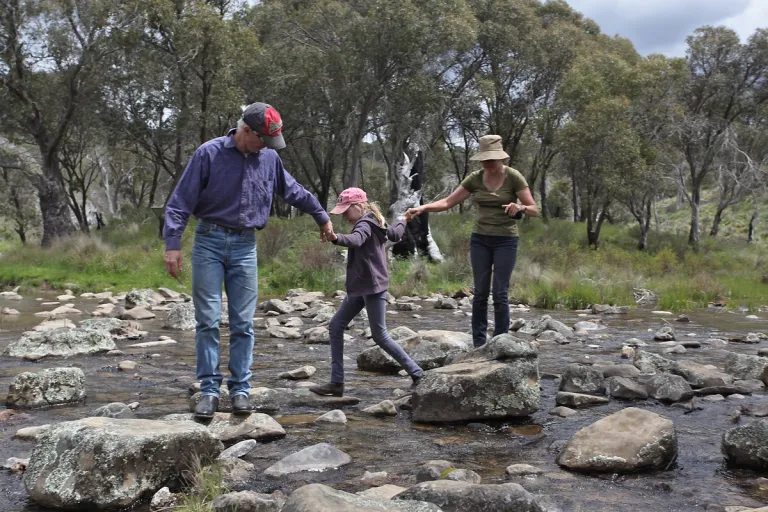We bring you this article courtesy of Pat Callinan and MR4X4.
With few exceptions, you’ll be hard pressed finding anyone happy to be involved in an animal strike. Especially in the outback. They’re a bad time for squeamish passengers. A whole heap of trouble. And depending on where you strike the animal with your 4X4 you could find yourself proper stranded. Your vehicle inoperable far beyond the black stump. So how can we not only minimise the chances of it happening to us? but also minimise the impact if it does? We’re glad you asked.
Step 1 – Try and avoid them
Now you’d think this should be pretty common sense, but by the way some 4X4s barrel along the outback highways apparently not. The easiest way to avoid an animal strike is avoiding travel at dusk or dawn times. While most people are familiar with the term Nocturnal to describe animals that are most active at night, most Kangaroos are actually Crepuscular, meaning they’re most active at dusk and dawn. They’ve also evolved to evade predators by waiting to the last second and then rapidly out manoeuvring them. That works for a Tassie Tiger running 40km/h, but they haven’t evolved to dodge a 3T 4X4 going 110km/h.
If you have to drive at these hours, there are a few precautions you can do still. First, is don’t out drive your headlights. Put simply, if a brick wall suddenly appeared across the road at the edge of your vision, could you stop in time? If no, you can use good quality driving lights to extend how far your vision reaches, and slow down to reduce how long you need to come to a stop. If there’s road kill about that’s a good sign of animal activity in the area, so even if you’re not spotting anything, there’s plenty of animal life nearby.
Step 2 – what to do if you can’t avoid a strike
There’s a misguided idea floating around that if you’re going to hit an animal, you should hit it square on. We’ve seen people accelerate towards a roo who’s happened to dart out. Not only is it a dick move for the animal, it’s also a dick move for your rig. The more speed you’re carrying, the more chance you’ll punch your bull bar back into your headlights or radiator. It also increases the risk of the animal being thrown over the bull bar and into your windscreen. There’s been plenty of fatalities over the years from animals going through the front screen.
With that in mind. Swerving is simply not an option. 4X4s by their nature don’t handle well. High centres of gravity. Soft suspension. Roof racks loaded with kit and a caravan or camper in tow. If you were asked to design a 4X4 that would perform poorly in a swerve test you’d design a 4X4 tourer. Sudden lane changes to avoid an animal at high speed can result in roll overs, spin outs, careening off the road, and even head-ons.
If you’ve got time, dip the lights. Kangaroos will only move to somewhere they can see. If they’re being blinded by our driving lights they’ll simply freeze. Then, wash off as much speed as you can. If you’re a softy at heart, you can definitely appreciate getting struck at 40km/h is significantly better for the animal than being struck at 100km/h. If you’re not, then the idea of a 50kg hitting your pride and joy at 100km/h should be more concerning than the same animal at 40km/h. Brake hard, and wash off the speed. If you need to travel quick to get to your destination, can you afford the delay if a roo goes through your radiator?

Step 3 – what to do once you’ve made contact
If step 1 didn’t work, then step 3 is going to be largely dependant on how well you’ve done in step 2. First thing’s first, get off the road. If you haven’t seen another car in three days it may not be too much of a concern, but Murphy’s Law says as soon as you leave your rig parked in the middle of the track a road train will come barrelling over the crest.
Once you’re safe, how are the occupants in your vehicle? If you’re a grizzled farmer who’s knocked off more roos than you can count you’re probably happy to keep motoring. But a young family with kids who have just punted skippy into the bushes could be a little shaken up. Even the panic from a quick deceleration can shake people up.
The next thing you’ll need to check on is the animal itself. Depending on the severity of the strike, the animal may be stunned then bounce off, or may require you to load it up in the back and see if the next town over has a vet. In the middle of nowhere that’s not going to be an option. But that’s a topic not for polite conversations like these.

Finally, have a look at your rig. Sheet metal damage may be enough to ruin your day, but it won’t ruin your trip. The first thing you’ll want to check is if you’re still holding coolant. If the radiator support has been pushed back, the engines fan can come into contact, or a hose can be ruptured. This is where your efforts in step 2 hopefully pay off. You’ll want to check your lights as well. If skippy has taken out your flash new driving lights, is it safe to continue on through known animal strike territory? And finally, check your under carriage. As grizzly as it may be, an animal of any size going under your rig has the potential to cause damage to your brake lines or suspension components leaving you stranded. There’s a reason we said not hitting them at all is the best outcome.





